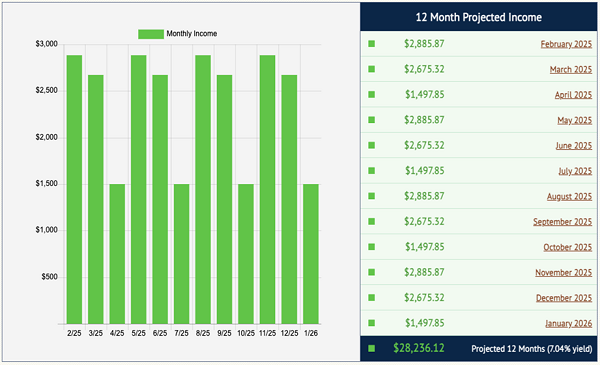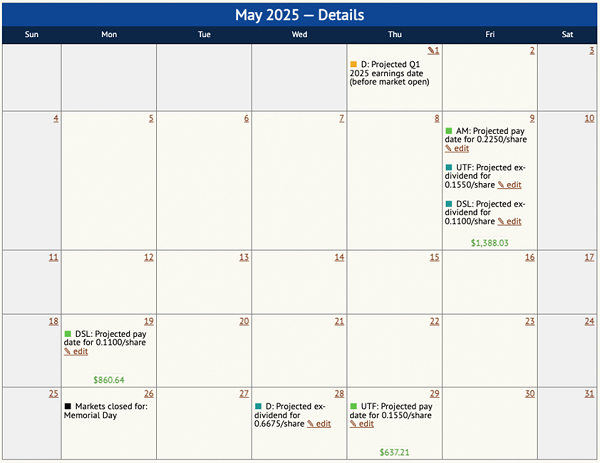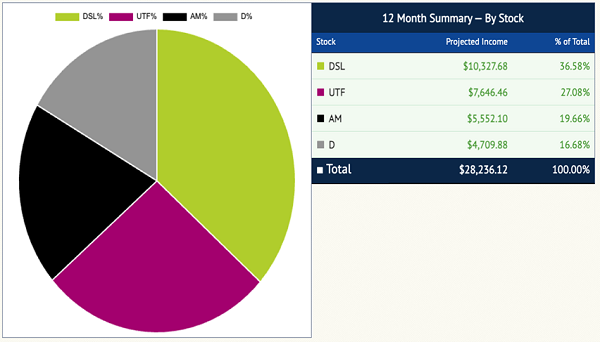Bonds (and bond proxies) are hated right now. That’s our shot at big dividends—because mainstream investors’ thinking here is totally backward.
We’re going to pounce, and use this opportunity to grab ourselves a huge 7.6% payout sporting an unusual “discount in disguise.”
Tariffs: Don’t Believe the Hype
The reason for this opportunity comes back to tariffs—which I admit, dear reader, I’ve heard so much about that I’m starting to dream about them at night!
The badly flawed logic most people are applying to tariffs is this: Tariffs will drive up prices, adding to an inflation rate that, according to last week’s CPI report, hit 3% year over year, up from 2.9% the month before and a mere 2.4% in October (and was ahead of expectations, to boot).
Here’s where that logic goes off the rails, though. We’ve been talking tariffs pretty much non-stop since November, when then-President-Elect Trump called for 25% duties on Canadian and Mexican imports in relation to border security.
Those have been put on ice for now. But are still very much alive.
Then there are 25% tariffs on steel and aluminum from all countries, announced on Super Bowl Sunday and set to come in on March 12. And finally we have the so-called “reciprocal tariffs” announced last Thursday (details are apparently forthcoming).
One thing we can be sure of is this will be an ongoing thing with Trump, who has been talking about tariffs since 1989, when he advocated for a 15% to 20% tariff on imports from Japan because of unfair trade practices.
But here’s where things get interesting: If the common “wisdom” on tariffs were true, we’d expect the 10-year Treasury yield (benchmark for most consumer and business loans) to soar, right?
Well, it did initially pop on last week’s hot CPI number. Then it did what it’s done over and over for the last few years: It “hit its head” on a new recent peak and dropped. It remains below the 5% level, where it’s hit the most resistance.
Bond Market Knows the Truth About Tariffs
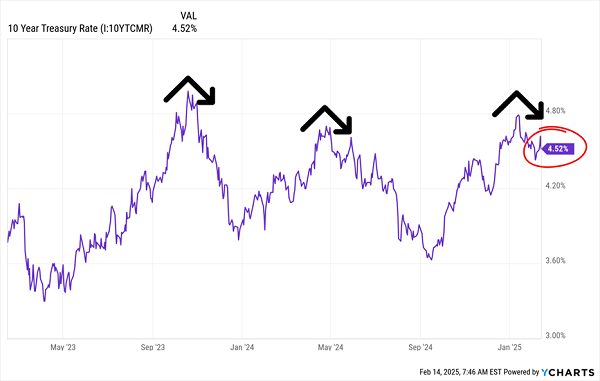
If the bond market were worried about tariffs spiking inflation, you’d expect the 10-year rate to break out. Instead, the opposite has happened.
That’s because, contrary to popular belief that these levies are inflationary, a recent study shows otherwise. The Centre for Economic Policy Research found that tariffs do not boost inflation because rising prices depend on a hot economy—and a trade war brings in the opposite, since tariffs are a short-term headwind on growth.
The Financial Times recently reached a similar conclusion. Yes, tariffs compress company margins due to upward wage pressure and higher costs. But these are typically absorbed by the firms—and their shareholders!
All of this sets up a buy window for us in bonds (and bond proxies)! Last Tuesday, we discussed the DoubleLine Income Solutions Fund (DSL), a high-yielding corporate-bond closed-end fund (CEF) yielding 10.4% that’s a terrific play on this opportunity.
Today we’re dipping into our Contrarian Income Report portfolio’s bucket of utilities, specifically another CEF—with a 7.6% yield in this case: the Cohen & Steers Infrastructure Fund (UTF).
You don’t have to squint hard to see that when 10-year yield pops, it’s a great time to buy this fund. And with last week’s “bounce-and-plunge” in said yield, we’ve got another good opportunity to get in—especially if, as I expect, the 10-year yield falls more than expected on a slowing economy:
Bond Proxy UTF Is a Smart “Rinse-and-Repeat” Trade on the 10-Year
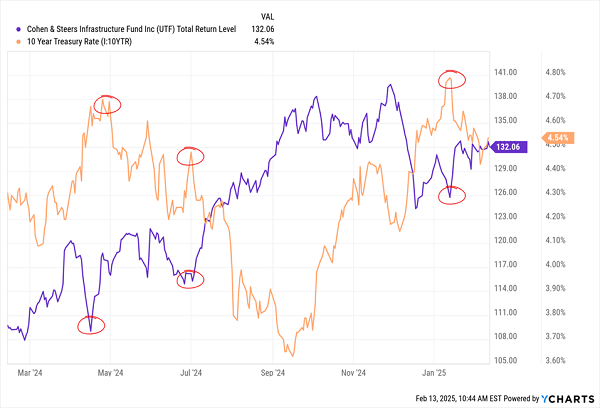
UTF is my “go-to” ticker for utility stocks. As mentioned, it pays 7.6% and gives us instant exposure to 256 strong utility names, including American Tower (AMT), the Southern Company (SO) and Duke Energy (DUK). About 34% of its portfolio is in electric utilities. It also holds 16% in corporate bonds (another part of the reason for the correlation with the 10-year Treasury yield) and 11% in pipelines.
Sometimes we’re fortunate enough to be able to buy UTF at a discount to its net asset value (NAV, or the value of its underlying portfolio). Today it trades near par. We’ll take UTF anytime it’s near par (or below) because its NAV will gain as rates decline.
Buy UTF, Then Track Its 7.6% Payout (and All of Your Dividends) With This
As I said, UTF is a winning pick here. And we like corporate-bond CEFs, too, as they also stand to gain as rates remain contained—and likely fall in the longer run. That’ll give us some nice upside on the five bond CEFs we hold in Contrarian Income Report (average yield: 10.2%).
We love big dividends like these, of course, but there’s one “downside” to buying them: keeping track of your payouts (though I’m sure you’ll agree that this is a good problem to have!).
That’s where a specialized “toy” whipped up by our IT team here at Contrarian Outlook comes in. It’s called Income Calendar and it helps quickly, easily forecast your dividends for the next 12 months!
Let’s do a quick run-through, using four income plays from our Contrarian Income Report portfolio—UTF, natural gas pipeline operator Antero Midstream (AM), the aforementioned bond fund we talked about last week, the DoubleLine Income Solutions Fund (DSL) and another utility stock: Dominion Energy (D).
These four pay dividends both monthly (UTF, DSL) and quarterly (AM and D). Let’s go ahead and plug them into Income Calendar, allocating $100,000 to each one, for a $400,000 sample “mini-portfolio.”
Right away, IC gives us the vitals:
On the left, we’ve got an “at a glance” custom income forecast served up in an easy-to-read bar chart. And on the right, Income Calendar gives us a dollars-and-cents monthly forecast, including our total projected income for the year of $28,236.12, good for a 7% average yield. Not bad!
(And note that we intentionally don’t forecast dividend growth in IC, to be as conservative as we can, but it’s possible we could bank a bit more than 7% as 2025 plays out.)
There’s more. Let’s dial up May 2025, one of our highest-paying months, in which we get paid by three of our four holdings.
You can see that Income Calendar not only tracks our payouts (including the exact amount forecasted from each stock and fund, in green) but other key dates, like the projected ex-dividend date (or the date by which you need to be a shareholder to receive the next payout, in blue) as well.
It also shows non-dividend-related events like market holidays (Memorial Day, in black). It’ll also tip you off to expected earnings dates (we see one of those, for Dominion, on May 1, in orange).
Moreover you can get a sweet breakout by stock, too (DSL is the star of the show here, yielding an outsized 10.3% today):
Income Calendar really is a complete roadmap that makes sure you’re always on top of what’s coming up for your holdings, and you’re never caught short of dividend cash when you need it.
There are also real-time email alerts for dividend declarations & payouts, a “week-ahead” summary telling us how much we’ll get paid and when. IC even has a handy tool that calculates our “yield on cost” (so you can see the “true” yield on each of your stocks, based on the timing of your original buy) and more.
I like to think of Income Calendar as an “AI-like” tool—smart as any chatbot but, let’s be honest, more valuable to you and me.
Click here and I’ll tell you more about this “AI-like” dividend planner and give you the opportunity to road test it for yourself. I’m sure you’ll love it.

